The 14th bread in the Bread Baker’s Apprentice Challenge is French Baguettes. This French bread utilizes a Pâte Fermentée or pre-ferment to bring out the flavor and improve the structure of the bread.
You can use the pre-ferment on the same day you make it, but according to Peter Reinhart, giving it an overnight treatment brings out more flavor. I made the Pâte Fermentée Saturday morning and let it rest in the refrigerator until Sunday afternoon when I was ready to bake.
“The baguette was said to have been invented during Napoleon’s Russian campaign when he ordered a new shape of bread that could be carried down his troops’ trouser legs. In fact, it was introduced in the 1920s after a new law banned bakers from working before 4am. They did not have enough time to bake a fresh boule for breakfast, so they created the baguette.”
—“Marching on its stomach,” Sam Coates, The Times (London), August 19, 2004, Home news; 6. Source: http://www.foodtimeline.org/foodbreads.html#baguette
You might also enjoy these other French Bread Recipes
French Baguettes
Pâte Fermentée
- 1 1/8 cups unbleached all-purpose flour
- 1 1/8 cups unbleached bread flour
- 3/4 teaspoon salt
- 1/2 teaspoon instant yeast
- 3/4 cup to 3/4 cup plus 2 tablespoons water, at room temperature
- 3 cups Pâte Fermentée
- 1 1/4 cups unbleached all-purpose flour
- 1 1/4 cups unbleached bread flour
- 3/4 teaspoon salt
- 1/2 teaspoon instant yeast
- 3/4 cup to 3/4 cup plus 2 tablespoons water, lukewarm
- Semolina or cornmeal for dusting
Directions:
Shaping the Loaves
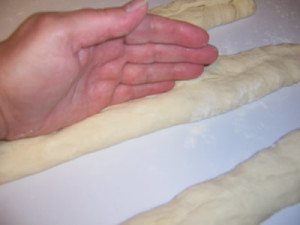
Happy Baking!
Cathy
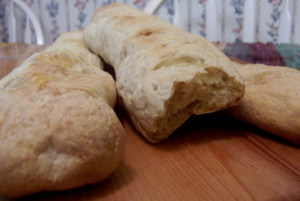
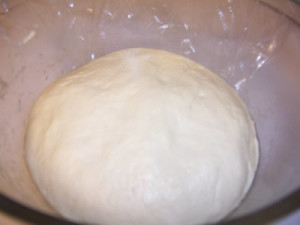
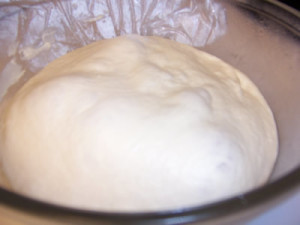
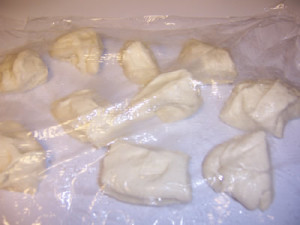
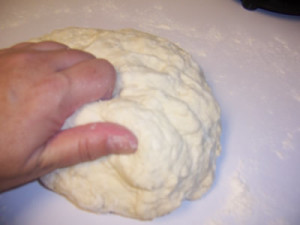
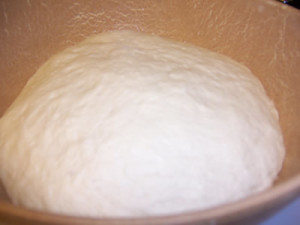
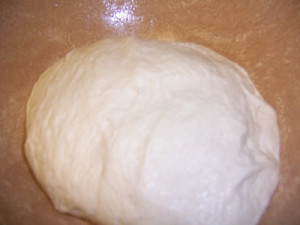
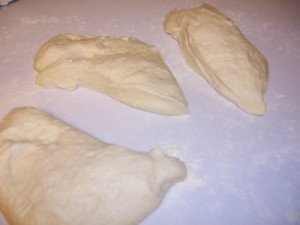
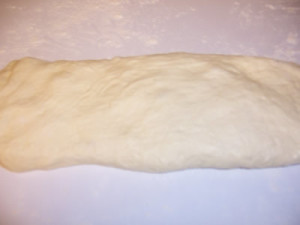
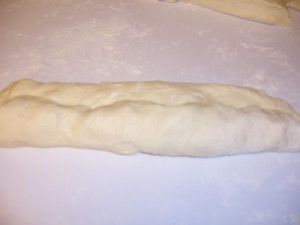
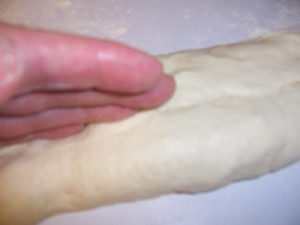
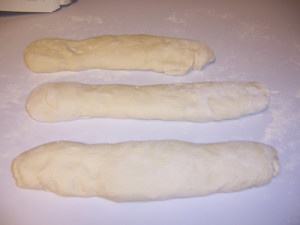
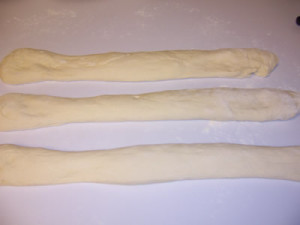
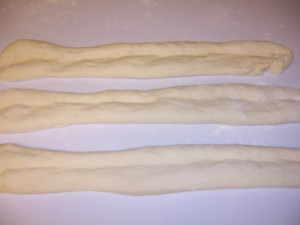
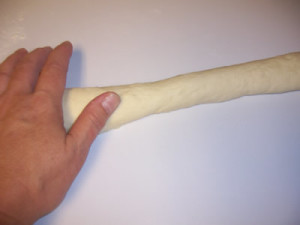
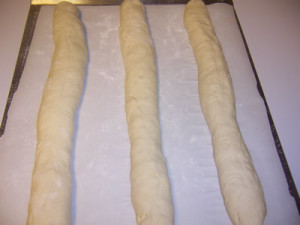
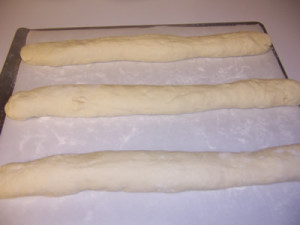
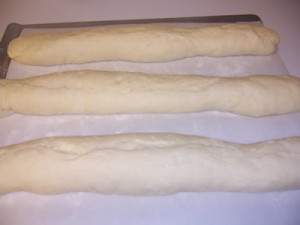
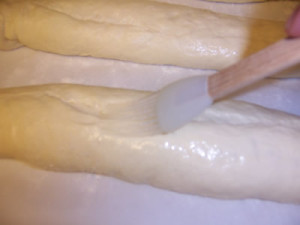
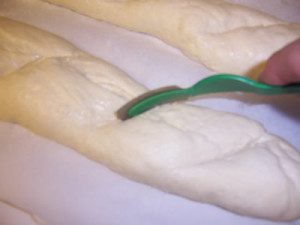
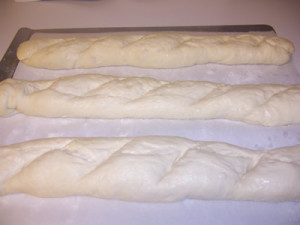


Frieda says
Great step by step post~ I’m sure that was a challenge to bake AND take all those photos! I’ll have to try brushing the loaves with water next time…my lame was snagging the loaves…
Cathy (breadexperience) says
Thanks! I learned that trick making the Artisan Bread in 5 Minutes baguettes. Thought it sounded like a good idea for this bread as well.
Anonymous says
This recipe is outstanding! Thank you so much for the time you put into this! I have just tried a batch in my wood fired oven and its wonderful! Thank you thank you thank you!!!
Cathy W. says
I liked this one as well. I bet it was really good baked in a wood fired oven. So glad you enjoyed it.